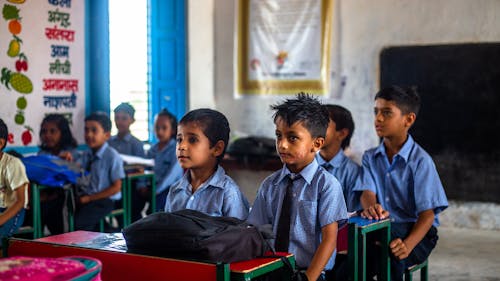Single institution functions as four separate schools -LP, UP, Secondary, & HS
Shillong, Feb 15: The school system in Meghalaya is likely to witness a massive overhaul with the state government considering clustering of institutions to enhance administrative efficiency and maximum utilisation of resources.
Officials believe the consolidation will not only eliminate redundancies but also improve their academic outcomes.
Under the current fragmented system, multiple sections of the same institution operate as separate schools – currently over 14,500 schools across the state – due to administrative classifications.
Clustering of schools was listed as a priority policy discussion in a review meeting chaired by Vijay Mantri, commissioner and secretary of Education department.
Explaining the administrative challenge of having multiple entities under one school, School Education & Literacy director Swapnil Tembe, said, “In many areas, a single institution functions as four separate schools — Lower Primary, Upper Primary, Secondary, and Higher Secondary.”
Each of assigned are assigned a unique UDISE (Unified District Information System for Education) code because of different funding schemes.
“In reality, they operate as one school but are managed as distinct entities,” he said.
Emphasising on the issue, chief minister Conrad K Sangma had earlier underscored the need for rationalising school structures to ensure better governance.
According to the 2011 Census, Meghalaya has a population of 29.66 lakh and accommodates 55,160 teachers across 14,582 schools.
With 7,783 government schools and 4,172 government-aided institutions, including ad-hoc and deficit schools, the state has the highest concentration of government schools in the Northeast.
“Given our relatively small population, the high number of schools is unsustainable. The National Education Policy (NEP) 2020 advocates for composite schools, which integrate education from pre-primary to Class 12 under one institution. This model will provide continuity for students, reducing disruptions in their learning journey,” Tembe added.
Currently, students in Meghalaya often change schools multiple times—transitioning from LP to UP, then to Secondary and Higher Secondary—sometimes across considerable distances.
“On an average, a student in Meghalaya changes schools four times in their academic journey. This fragmentation contributes to dropout rates. Clustering schools will create a more stable and nurturing learning environment,” Tembe noted.
The Education Department has now directed officials to conduct field inspections to identify schools that can be merged.
A detailed report is expected soon, setting the stage for an overhaul of Meghalaya’s education system.




